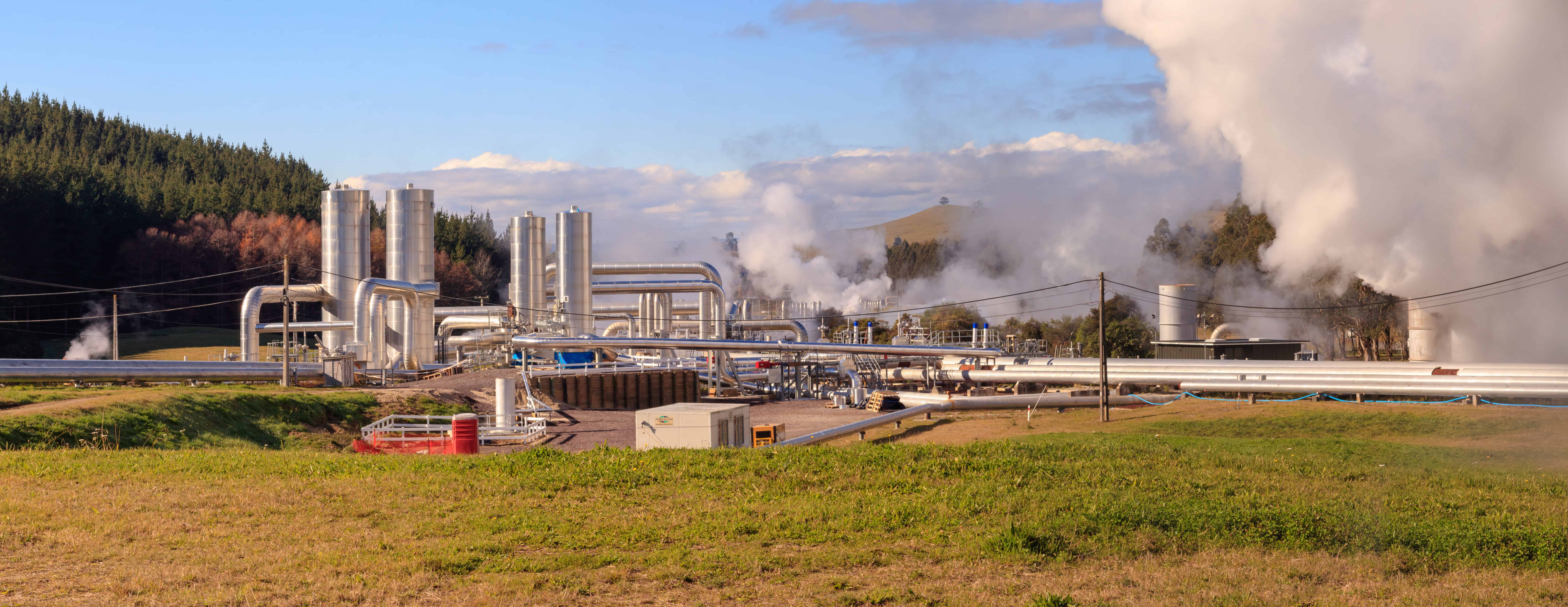Let’s take a brief look at what you can expect to learn in each lesson within the Geothermal Energy Basics course.
Geothermal Energy Basics Course Content Overview
- What is Geothermal Energy?
- Geothermal Systems
- Geothermal Applications
- Example Geothermal Systems
- Oil and Gas Technology in Geothermal
- Subsurface Environmental Considerations
- Surface Environmental Considerations
- Geothermal Power Plant Operations
- Innovative Geothermal Projects for the Future
The first lesson in the course, What is Geothermal Energy?, introduces how and where earth’s heat is formed, specifically radioactive heat sources. The lesson provides insight into how humans can harvest Earth’s natural, subsurface heat in the form of geothermal energy.
The next lesson, Geothermal Systems, explores the different types of geothermal energy systems, distinguishing between high and low temperature geothermal resources and where they are located worldwide, exploring how geography and geology greatly influence the placement of these systems.
The lesson on Geothermal Applications looks at different applications of geothermal energy systems: heat pumps, district heating and cooling, direct use and power generation.
The Example Geothermal Systems lesson explores some of the more developed geothermal energy systems, in the United States and around the globe, with an eye towards power production at these sites. In addition, geothermal potential in the United States is discussed.
The next lesson, Oil and Gas Technology in Geothermal, describes how oil and gas technology is being transferred to geothermal projects. Drilling technology and hydraulic fracturing are key to many ‘next-generation’ geothermal projects, but some current off-the-shelf technologies may be limiting. These limitations will spur additional technological development, both through research and field projects.
The next two lessons, Subsurface Environmental Considerations and Surface Environmental Considerations tackle both subsurface and surface environmental considerations for geothermal projects that must be closely managed and monitored to protect both the environment and the public. Water consumption and protection, scale and corrosion, induced seismicity, and land subsidence are all subsurface environmental challenges that must be addressed. In addition, surface footprint, land alteration and disturbance, road traffic, noise levels, and surface emissions and monitoring are all important surface environmental considerations for geothermal projects.
The lesson on Geothermal Power Plant Operations is an overview of the various types of plants associated with geothermal projects. Subsurface working fluids management, geofluids and mineral recovery, and co-produced water are considerations related to power plant operations.
Finally, the lesson on Innovative Geothermal Projects for the Future looks at challenges in need of innovation for commercial liftoff of geothermal in the United States. In addition, the lesson provides a survey of some recent innovative geothermal projects that are helping to define the future of geothermal energy in the United States and across the globe.
The Geothermal Energy Basics course provides you with a fundamental understanding of the science, engineering and technology behind geothermal energy projects. A self-check at the end of each lesson provides the opportunity to refresh and cement your knowledge so that you are ready for the next lesson.
Contact us today to learn more about our courses or check out our FAQ page for answers to our most commonly asked questions. Sign up for your next online training course with TOP Energy Training today!


